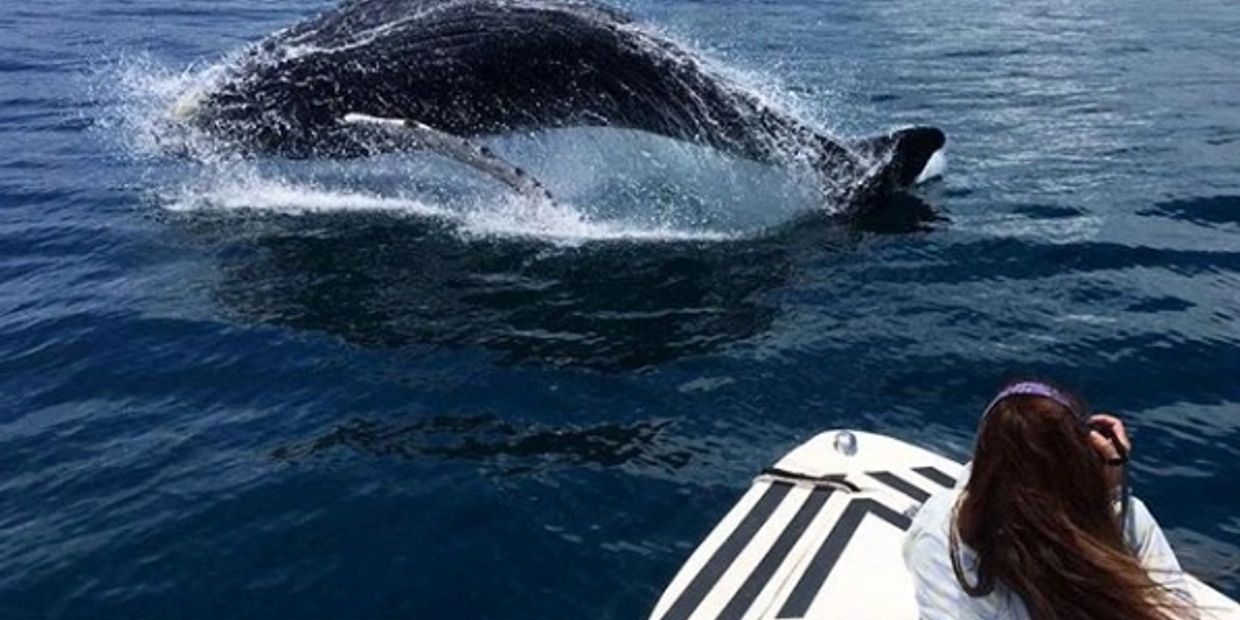
WHALE WATCHINg on the nicoya peninsula
Whale Watching Charters
Costa Rica is one of the best places in the world when it comes to whale watching. The warm climate and optimum water temperature mean multiple species of whales come to the Costa Rican coast looking to mate. Our tours are open year-round with excellent packages to help you witness this astounding sight.
Our deep waters are the breeding grounds of all species of mammals, from humpback whales to spotted and bottlenose dolphins. And visitors can get the once in a lifetime opportunity to see these magnificent creatures in their natural habitat.
What are the migration patterns of whales?
When you're looking to take up whale watching as a hobby, you'll want to familiarize yourself with their migration patterns. Whales move from one area to another depending on the time of year so they can stay in warmer waters.
First, you'll need a brief idea of the geography of the region. You have California up top, Costa Rica below it, and Antarctica to the south. This means that over a thousand whales spend the summer months vacationing near the California coastline. And come December they migrate further down, finding their way to Costa Rican waters. Antarctic waters are warm in December, so you have hundreds of whales living, mating, and breeding in those waters.
These Antarctic whales spend all summer adding to their layers of blubber. When temperatures in the Antarctic become cooler in June, this species of whale migrates north to the warm Pacific waters around the same time as the Californian whales vacate it. This migration is one of the longest journeys any species in the animal kingdom regularly makes. What this constant cycle of movement means for you is that whale-watching is a 24/7 full-year activity in Costa Rica.
What are the mating habits of whales?
A huge attraction when it comes to whale watching is spotting the baby whales. Both the Californian and Antarctic whales arrive in the warm Costa Rican waters hoping to escape their winter months. This means they stay an entire season till spring. During this time, they mate. A whole twelve months later, when the cycle repeats itself, and they are once again visiting Costa Rica, the female whales give birth.
Baby whales grow up to eight meters or more in that first year. In fact, some specialists say that the reason humpback whales migrate to warmer waters, to begin with, is to give the baby whales the opportunity to grow rapidly in a safe environment. Tropical areas like Costa Rica don't have large predators, for example, orcas who would present a threat to these baby whales.
Whatever their motivation, a trip to Costa Rica gives you the prime opportunity to witness whales of all sizes cohabitate. And if you're lucky, you'll get to see an adorable baby whale or two during your stay.
Where should you go whale watching?
Once you sign onto a tour, your guides will make sure you get to see whales in the area. All of the captains and guides responsible for whale watching tours communicate over a radio, and whenever a whale is spotted, they will rush you to the area. Our guides also chart the movement patterns of these sea creatures, so they generally have an idea of where they'll be at any given time.
The Southern coast is a prime place to spot these magnificent animals, near Jaco or Manuel Antonio, as far as the Osa Peninsula. The reason Humpback whales are so popular when it comes to whale watching is because of their movements. They'll pop up to the surface every little while fin slapping and fluke flipping.
We still have no proven explanation for why they do this. Some experts say it is to communicate with other whales in the area, because of the sound it makes when their massive bodies hit the water. Others claim it is part of a mating cycle. While yet some scientists think it is a method of removing parasites and lice from their bodies.
Whatever the reason, watching these massive creatures flipping about and popping out of the water is an exhilarating experience.
What are the ideal times for whale watching?
As we have already established, whale watching is definitely a year-long activity, so there are no restrictions. However, if you would still like to plan your trip around a specific time and are determined to see a humpback whale, we would recommend the months between December and April.
These are the months where both groups of whales are moving from one coast to the other. So you have the Californian humpbacks migrating downwards and the Pacific whales migrating upwards. Visit during this season, and there's no way you won't get to see enough whales.
To conclude, whale watching is a once in a lifetime experience you don't want to miss out on.
Copyright © 2020 Orca Charters Fishing
Powered by Pura Vida